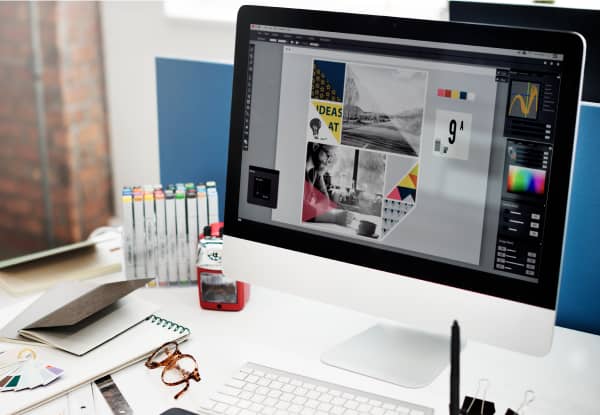
Creativity refers to the ability to generate original and innovative ideas, solutions, or expressions. It involves thinking outside the box, making connections between seemingly unrelated concepts, and coming up with novel approaches to challenges. Creative individuals possess a unique perspective and are often willing to take risks and explore unconventional paths.
Creative designs are made through a combination of various factors and processes. These factors play a crucial role in shaping the outcome of the design and ensuring it meets the desired objectives. Here are the main factors involved in creating creative designs:
Understanding the Brief: Designers start by thoroughly understanding the project brief. They analyze the client's requirements, target audience, project goals, and any specific guidelines provided. A clear understanding of the brief lays the foundation for the design process.
Research: : Effective design begins with research. Designers explore the industry, market trends, competitors, and user preferences to gain insights and inspiration. This research phase helps them identify opportunities and come up with unique and relevant concepts.
Creativity and Inspiration:Creativity is the cornerstone of any design process. It involves thinking outside the box, exploring novel ideas, and pushing the boundaries of conventional thinking. Inspiration can come from various sources, such as nature, art, architecture, technology, or even personal experiences.
Conceptualization: After gathering insights and generating ideas, designers move on to the conceptualization phase. They refine their ideas, explore different visual styles, and experiment with various layouts to find the most appropriate approach to the design.
Design Elements: Designers work with a range of elements, including colour, typography, imagery, shapes, lines, and space, to create visually appealing and effective designs. The choice of these elements significantly influences the design's mood, tone, and overall impact.
User Experience (UX): In many cases, creative designs are intended for digital platforms or products. In such instances, the user experience (UX) becomes a critical factor. Designers focus on ensuring that the design is user-friendly, intuitive, and engaging, making it a seamless experience for the end users.
Iteration and Feedback: The design process often involves multiple iterations and feedback loops. Designers present their ideas to stakeholders or clients, gather feedback, and make necessary adjustments to refine the design further.
Attention to Detail: Paying attention to the smallest details is essential for creating high-quality designs. Every element needs to be aligned, balanced, and visually pleasing.
Communication: Designs are intended to convey specific messages or ideas. Effective communication through design requires clear and coherent visual language that resonates with the target audience.
Tools and Technology: The use of appropriate design tools and software is crucial for bringing the creative vision to life. These tools enable designers to work efficiently and produce professional-quality designs.
Collaboration: : In many cases, creative design projects involve a team of designers, developers, and other stakeholders. Collaboration and effective communication among team members are key to successfully executing the design.
Testing and Refinement: Before the final design is implemented, it may undergo testing to ensure its effectiveness. Any necessary refinements are made based on user feedback or usability testing.
By understanding the brief, conducting thorough research, and thinking outside the box, designers can unleash their creativity to craft impactful designs that captivate and leave a lasting impression. Through attention to detail, effective communication, and collaboration, they elevate their work, shaping the way we perceive and experience the world. Unlocking creativity is a transformative journey that yields powerful designs with profound impact.

Enquire Now